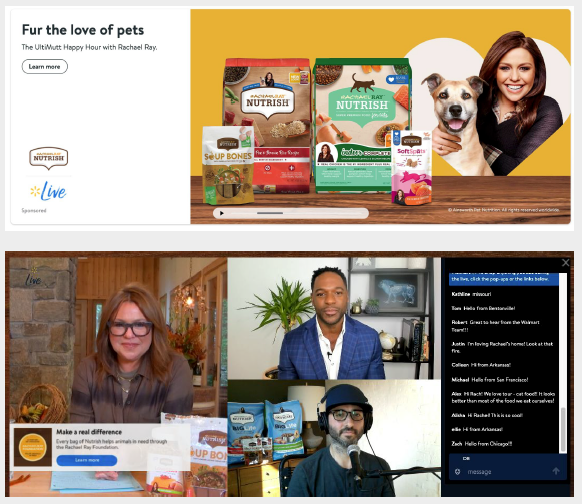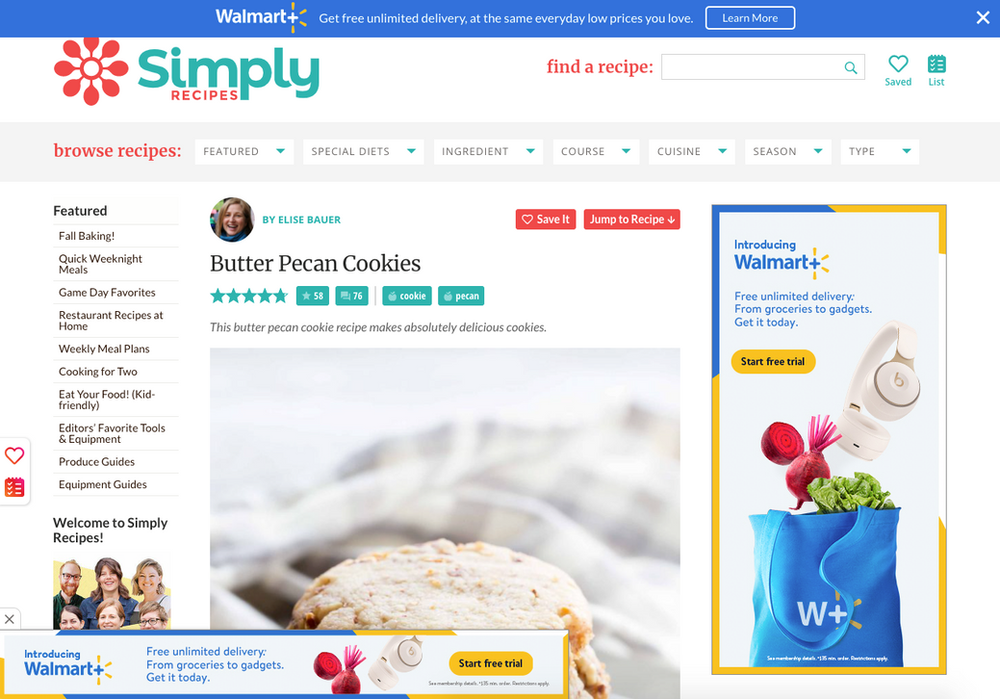By Ethan Goodman, The Mars Agency
On Oct. 25, the new Walmart DSP went live for “select suppliers … just in time for the holiday season.” Created in partnership with independent “demand side platform” operator The Trade Desk, the automated service will allow Walmart Connect advertisers to “broaden their reach and engage with customers wherever they are and bring them back to the Walmart ecosystem. … Marketers and advertisers will be able to access numerous industry-leading platform capabilities powered by the scale of Walmart’s omnichannel data,” according to Rich Lehrfeld, Senior Vice President of Walmart Connect, in a recent blog post.
Walmart DSP has great potential as an effective, efficient tool for the many brand marketers who are working to execute campaigns across the retailer’s ever-expanding media platform. Of course, the service comes with some watchouts as well. The Mars Agency’s Ethan Goodman analyzes the pros and cons for marketers who are considering the new service.
For this analysis, I’ll be looking through the lens of a shopper marketer. Assessing the Walmart DSP from the perspective of a national media buyer would lead to some different considerations that I will explore in a future article.
Walmart Connect already allows advertisers to buy a variety of digital media including onsite search/SPA (sponsored product ads), onsite display ads, offsite display/AXT (audience extension), Facebook and Pinterest ads, among others. Until now, the offsite opportunities were powered by a more limited solution provider and could only be executed through a managed service. And apart from a recently launched beta test for onsite display advertising, the only tactic available through self-serve was onsite search/SPA (through approved Walmart Advertising Partner companies).

Through this new partnership, Walmart Connect is shifting the underlying managed service platform for offsite/AXT to The Trade Desk but also launching a custom DSP, a programmatic media platform that will enable brands to manage their own offsite campaigns. Brands, therefore, will have the option to execute their offsite campaigns through the DSP or continue to use the managed service through their Walmart Connect rep. (It remains to be seen if both options will provide advertisers with the same set of opportunities.)
Potential Benefits
Compared to what was previously available (and, perhaps, what will now be available through the managed service going forward), Walmart DSP will provide enhanced features for offsite/AXT campaigns, including:
- Premium inventory across display, video, mobile, connected TV and streaming audio.
- Augmented targeting capabilities, including the ability to combine brand/agency-side 1st party data and other 3rd party data sets with Walmart Connect’s proprietary 1st party data.
- Expanded creative formats.
- Improved brand safety and 3rd party verification (viewability, fraud, etc.) safeguards.
It also will give brands direct control of campaign setup and real-time optimization which, based on our past experience, will lead to better results. Under the current system of managed service, performance often isn’t maximized because the campaigns aren’t monitored closely or frequently enough — or aren’t adjusted in response to optimization suggestions.
Potential Drawbacks
The most obvious drawback is increased costs. Most brands don’t have the in-house skills and/or resources needed to execute self-serve DSP buys in-house. Assigning the work to their media or shopper agency will result in incremental fees that, depending on the size of the campaigns or total annual spending levels, could be anywhere from 5% to 15% of total working dollars.
That said, it’s possible — and I might even say likely — that CPMs for the DSP will prove to be lower than they are for managed services because the premium that Walmart Connect charges for support won’t be included in campaign fees. And that savings could be used to cover the additional internal fees.
There’s also the potential for platform overload. If brands shift search, onsite display and offsite/AXT display all to self-serve, they’ll be required to work across three different platforms/systems: a 3rd party for search, the DSS for onsite and the DSP for offsite. That feels like a heavy lift for one retailer — although a solution here would be to find an agency partner that will be an expert on all three platforms. (I happen to know of one, if you’re interested …)

The Price of DSP
The key variable that’s still to be determined is the price tag. Of course, the relative expense will depend on the comparison you’re making. It will almost certainly be more expensive than what a media agency pays on a CPM basis for national programmatic buys through its preferred DSP. (Walmart Connect charges a significant premium for access to its 1st party data, which is used for targeting and closed-loop attribution — and is nearly impossible to replicate via “regular” DSPs.) But that’s not a very good apples-to-apples comparison because the objectives of a national media buy are fundamentally different than those of a Walmart-specific program that encompasses so many other business considerations.
Meanwhile, Walmart DSP will probably be similarly priced to other managed-service, offsite digital media offerings operated by 3rd parties. And, as noted earlier, it will probably be less than what brands currently pay for managed service offsite campaigns via Walmart Connect today — and in the future.
Our Recommendation
The simplest way to see how well the Walmart DSP will work for you is to give it a try. Identify key campaigns in Q4 of 2021 or Q1 of 2022 to run via the DSP and see how they perform relative to the old managed service campaigns you’ve run. That’s a relatively low-risk way to gain immediate, actionable learning to determine how you should proceed in the future.

About the Author
The Mars Agency’s SVP-Commerce Media, Ethan Goodman is a renowned marketing strategist with deep expertise in digital commerce and shopper marketing. He’s been named a “Young Influential” by Adweek and a “Who’s Who in Shopper Marketing” by Path to Purchase IQ and also serves as a Faculty Member at the Path to Purchase Institute. Prior to his current role, Ethan built, grew and managed The Mars Agency’s Ecommerce and Innovation practice groups, and also guided the team that created SmartAisle — the world’s first voice-powered shopping assistant for brick & mortar retailers.
Contact Ethan at [email protected].